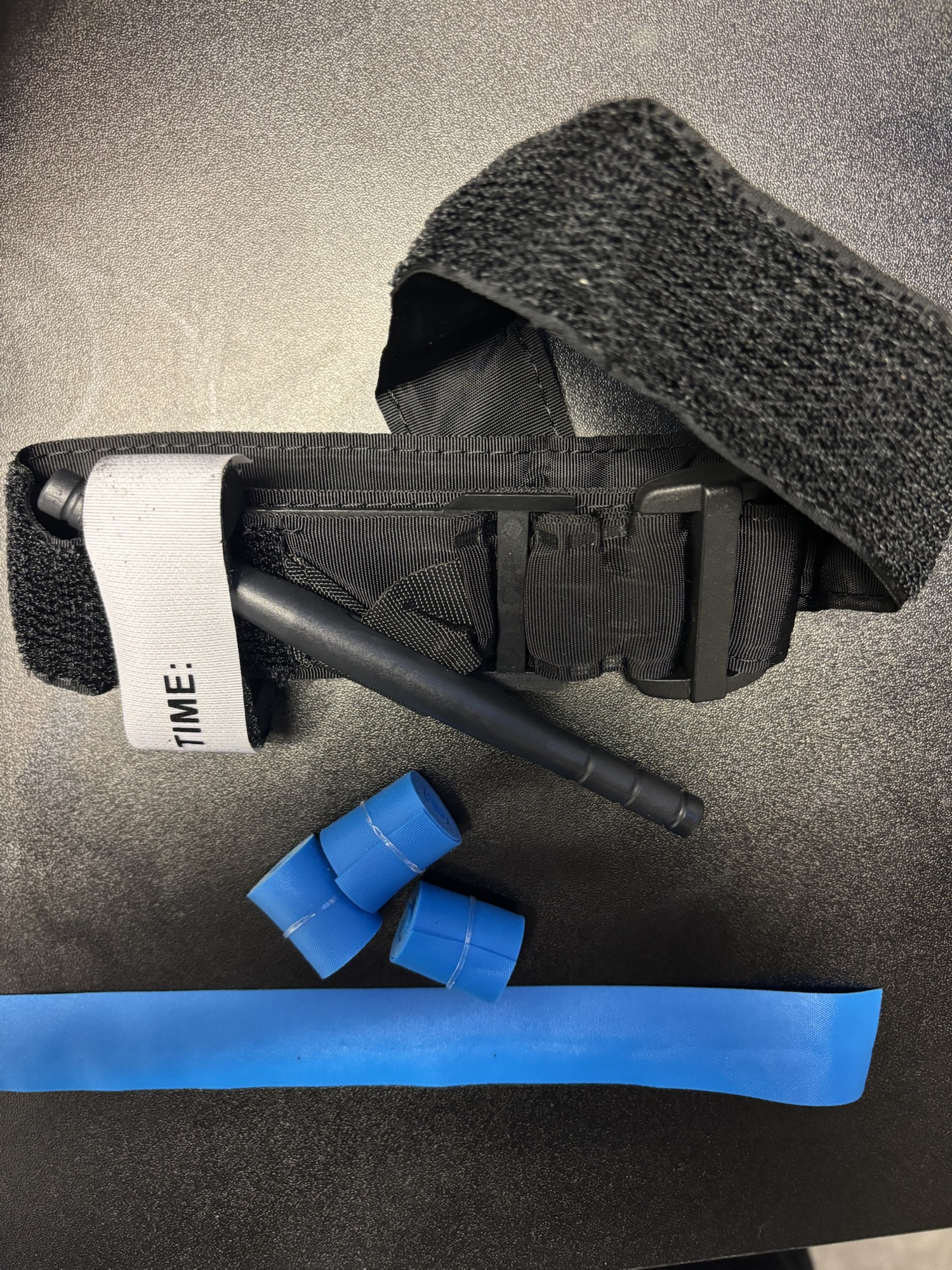
In today’s environment, school security is a top priority for educators, administrators, and parents alike. While most schools are proactive in conducting lockdown drills, installing security cameras, and training staff in emergency procedures, there’s often an overlooked aspect: the proper sizing of tourniquets in Stop the Bleed kits, especially for younger students.
Stop the Bleed Training: Crucial but Often Incomplete
Stop the Bleed training has become increasingly common across schools nationwide. This program teaches teachers, staff, and even older students how to manage severe bleeding effectively until professional medical help arrives. While this training significantly boosts a school’s preparedness, it sometimes misses a crucial point: standard-size tourniquets may not work effectively on young children in elementary or preschool settings.
One Size Does NOT Fit All
Standard tourniquets typically found in bleeding control kits are designed primarily for adults and older children. However, these tourniquets may fail to adequately compress the smaller limbs of younger children, potentially making them ineffective in a critical situation.
The Importance of Pediatric Tourniquets
Pediatric-sized tourniquets are specifically engineered to accommodate smaller limbs, ensuring that bleeding control measures are both safe and effective. The phrase “Two is one, one is none” highlights redundancy’s importance in emergency preparedness, but there’s a crucial twist: “Two is none if you don’t have the right size.” Without the right tools, even the best-prepared individuals may find themselves unable to manage an emergency effectively.
Auditing Your Emergency Kits
Every school and childcare facility should regularly audit their emergency response equipment to ensure all necessary sizes and types of medical supplies, including pediatric tourniquets, are readily available. Emergency kits must reflect the actual demographics of the student population—particularly critical for preschools and elementary schools.
Recommendations for Enhanced School Safety
1. Regular Training: Conduct frequent Stop the Bleed training sessions, explicitly highlighting pediatric care needs.
2. Pediatric-Specific Supplies: Stock bleeding control kits with pediatric-sized tourniquets and pressure dressings suitable for smaller limbs.
3. Routine Audits: Perform regular reviews of emergency kits to maintain and update supplies accordingly.
4. Expert Consultation: Engage school security experts or medical professionals to guide your preparedness strategies and ensure comprehensive coverage.
Conclusion: Prioritize Comprehensive Safety
Taking school security seriously means looking at all angles of potential emergencies. Ensuring you have the correct equipment, including pediatric-specific tourniquets, can mean the difference between life and death. Let’s commit to safeguarding every student by preparing thoroughly and thoughtfully.
By prioritizing the inclusion of pediatric-sized tourniquets, schools can significantly enhance their emergency response capabilities, ensuring no student is left vulnerable.